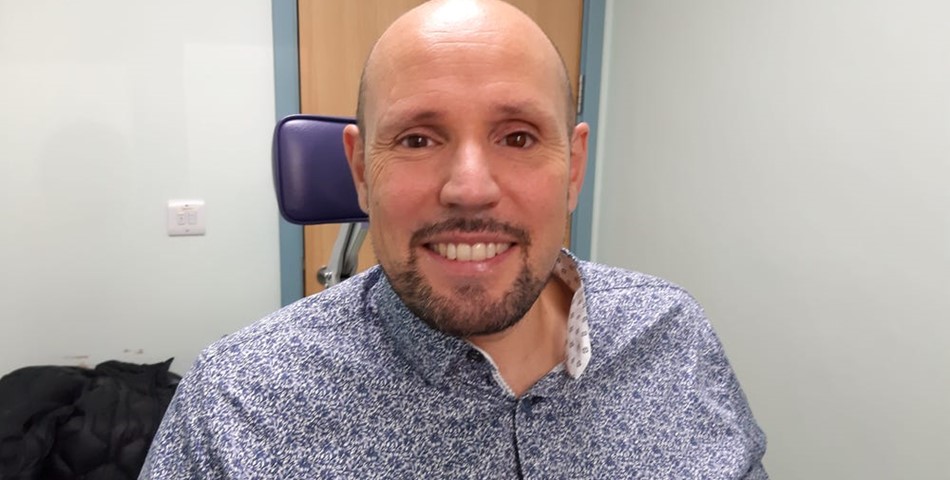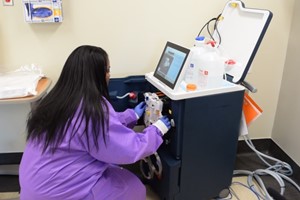TALLAHASSEE, Florida — A London patient, Steve Verze, became the first to use a 3D-printed prosthetic eye in November 2021. Its advancements in aesthetics, durability and production process allude to an auspicious future for prosthetics. Yet, developing countries struggle regarding prosthetic accessibility and affordability. Losing a limb or organ in poverty is extremely impactful since access to prosthetic devices or assistance is rare.
The recipient was Steven Verze, an IT engineer originally from Melbourne, Australia. He told Insider that he was drawn to the procedure after he suffered a traumatic eye accident at the age of seven. This caused him to lose all sight in one of his eyes when he was 21.
"It was at that point I decided to get a prosthetic eye," Verze said. He added that at the time, the type of surgery for receiving a prosthetic eye was relatively new, but he imagined technology would eventually improve prosthetics over time.
According to the hospital, traditional acrylic prosthetic eyes are hand-painted and take approximately six weeks to create. But a 3D-printed eye can be produced within two and a half hours. It is then sent to an ocularist, which is someone who specializes in the fabrication and fitting of a prosthetic eye. That process takes two to three weeks.
A 3D-printed prosthetic eye subsequently reduces the wait times by half for patients.
Verze said he went for a routine prosthetic upgrade at the hospital, which only takes place about every 10 years. It was there that he met the 3D team, who at the time were experimenting with eye shapes, colors, and sizes.
"I jumped on the opportunity to participate in the research. Given my background, I was super interested in the process and technology and was more than happy to help where I could," he said.
Verze said he was "not nervous or scared at all," by the procedure. "By this point, I have lived with my prosthetic for over 25 years, the hard bit was over for me many years ago," he added.
A 3D Difference
Steve Verze made history by replacing his acrylic eye with a 3D-printed prosthetic. Since he was 20 years old, he has worn a prosthetic and expressed that he was always self-conscious wearing it. The difference between his previous eye and the 3D counterpart is wider than expected. Traditional prosthetic eyes take six weeks to finish due to hand painting acrylic. The 3D printing prosthetic takes two to three weeks in comparison. Acrylic eyes require an anesthetic for children due to the challenge of molding them to the eye socket. The 3D eye only uses digital scans and “is a true biomimetic and a more realistic prosthetic, with clearer definition and a real depth to the pupil.” The world’s first 3D-printed prosthetic eye shows advancements that expand the possibilities of prosthetics forever.
UCL (University College London) researchers, in collaboration with the Moorfields Eye Hospital in London, led this project. Professor Mandeep Sagoo, the principal investigator, said, “We are excited about the potential for this fully digital prosthetic eye. We hope our forthcoming clinical trial will provide us with robust evidence about the value of this new technology.” He noted the decreased waiting times and lists as well. The trial will measure the effectiveness of the 3D-printed eyes vs. the hand-made acrylic eyes. It will consist of 40 patients that test the prosthetics on movement, comfort, look and overall benefits. The results of the trial will determine the future of prosthetic eyes. More trials and innovations will ultimately lead to widespread access, the overarching goal of prosthetic advancement.
Prosthetics in Poverty
Developing or low-income countries do not have access to prosthetics as other nations do. The 3D-printed prosthetic has undergone utilization for years now regarding arm or leg prosthetics, making costs and access better for patients. “The World Health Organization estimates that 30 million people need prosthetics and orthotic help. More than 75% of developing countries do not have a prosthetics and orthotics training program in place, often leading to poorer clinical coverage of patients.” Even with the current technology, accessibility is a dire problem. Patients often find prosthetics difficult to attain since they might need physical therapy, maintenance and specialized socket fitting to have a prosthetic.
Barriers remain between poverty and prosthetics, yet 3D-printed prosthetics cost significantly less. A prosthetic leg could cost $4,500 to $50,000 while only built to last 3 to 5 years of use. This repeated cost is not realistic or reasonable for those in low-income countries or poverty. Yet, even with the lower cost provided by 3D-printed prosthetics, it is still a challenge to access the required materials. Durability, assembly and technology are holding 3D printing back from becoming the solution to prosthetics in developing countries. Hopefully, the technological innovations that are emerging will eventually reach patients everywhere.
LIMBS International
An outstanding nonprofit organization works to help amputees in the developing world. LIMBS International transforms lives, provides rehabilitation and develops technology for prosthetic patients. Losing a leg is devastating for developing countries since they lose transportation and jobs. LIMBS is fighting to increase the number of amputees with access to prosthetics, which is currently less than 5%. “Through [its]extensive network of hospitals and clinics around the world, LIMBS provides patients with prosthetic limbs (above and below the knee) as well as rehabilitation services to improve their lives, which positively impacts their families, friends, and communities.” Its team understands the disparity between the industrialized and developing world while attempting to reduce it.
LIMBS offers a LIMBOX, a kit that consists of all of the required components for an above-the-knee amputee. This makes it easier for patients to have and maintain prosthetics. It is a very efficient program with a holistic approach and high success in combining technology with rehabilitation. LIMBS prides itself on serving 49 countries around the world. With the help of nonprofits like LIMBS International, prosthetics are becoming more widely available.
The future of prosthetics is bright, with technological advancements occurring every day. Steve Verze may have been the first to have a 3D-printed eye, yet he will not be the last. LIMBS International dedicates its efforts towards prosthetics for patients around the world. With efforts worldwide aiding this cause, hope is turning into progress. Will 3D printing become the future of prosthetics, or will innovation take a new path? No matter the methodology, prosthetics should develop to reach all who need them.
The global ocular implants market size was valued at USD 13.30 billion in 2021 and is expected to expand at a compound annual growth rate (CAGR) of 5.8% from 2022 to 2030. Increasing incidence of eye disorders such as age-related macular degeneration, cataract, glaucoma, and scleritis is the major factor anticipated to drive the market. The increase in the incidence rate is leading to a rise in demand for surgical procedures that require ocular implants. For instance, according to a research article published by the U.S. National Library of Medicine, based on the earlier trends in cataract surgeries, it is anticipated that 3.7 million cataract surgeries must have been performed among the Medicare beneficiaries in 2020 in the U.S.
Technological advancement is yet another factor playing an important role in propelling market growth. The introduction of micro-invasive glaucoma devices for patients suffering from glaucoma is a classic example of the technology that has evolved over the last few years. For instance, Glaukos Corporation received FDA approval for its second-generation trabecular meshwork bypass stent, iStent Inject in June 2018. The device is indicated for the treatment of mild to moderate glaucoma and is approved for implantation at the time of phacoemulsification.
Anna Montgomery













